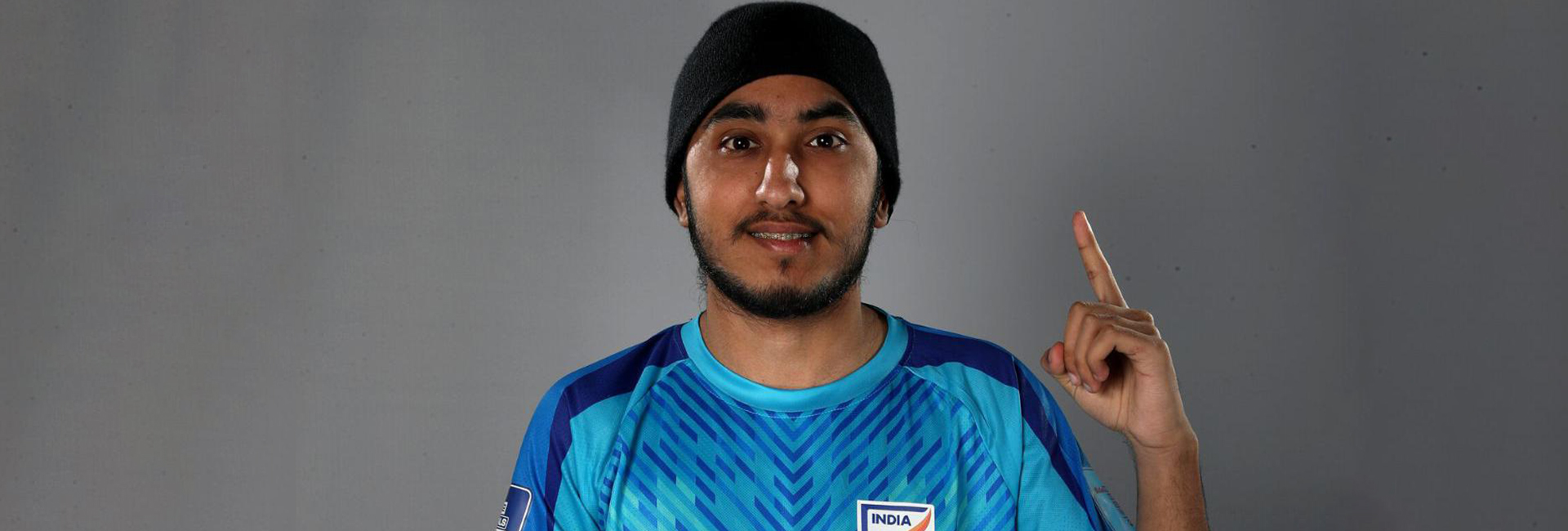(July 26, 2024) A 23-year-old from Chandigarh, who is a rising star in Indian esports, has scripted history by becoming the first Indian to qualify for the FC Pro 24 World Championship. In a thrilling play-in match, Charanjot Singh emerged victorious with a 5-4 scoreline against “JP Sleator,” securing his place among the top 32 players in the world. This achievement followed his impressive third-place finish in Gathering D, solidifying his spot in the main competition. The FC Pro World Championship 24 stands as the pinnacle of eFIFA competition, hosted in Berlin, Germany, with an impressive $1,000,000 prize pool. Charanjot’s historic qualification marks a monumental moment for Indian esports, yet his journey is far from over.
View this post on Instagram
His love for esports began with casual gaming at his friend’s place during weekends, while growing up in Chandigarh. “I did not have a console at that time. I used to play during my summer vacations or in weekends,” said the boy who loved Fortnite, Call of Duty among other games. But it was FIFA that he like the most owing to his love for football. He remembers watching 2010 FIFA World Cup as a seven year old, and was instantly hooked. However, things took a serious turn in 2019 when he participated in his first esports competition in Chandigarh. “That was the start of my competitive chapter in e-sports,” he said in an interview.
He cultivated his passion for FIFA through local tournaments, where his skill and dedication eventually propelled him to the forefront of Indian esports. “During the lockdown, I began playing professionally for the first time. In 2020, I signed my first eSports contract,” he added. Two years later, he represented Bengaluru FC at Indian Super League. But the big break came when he represented India at the 2022 Asian Games held in September 2023 in Hangzhou in China. It was in 2018 that esport was first introduced as a demonstration sport in 2018 in Jakarta and Palembang.
In a short span, Charanjot has become popular in the world of esports with even Korean players recognising him. “The pressure of being the favorite makes me perform better,” he had said.
View this post on Instagram
However, it hasn’t been an easy journey for Charanjot who had a hard time finding sponsors since it’s esports and not sports. Since mobile games are quite popular in India, those esports tournaments gather much viewership than FIFA. “That’s because FIFA is a console game. Getting consoles in India is a costly affair. For mobile games you can get any mobile and start playing games but for console games you need to spend ₹40,000-50,000 at least. Then you have to buy games every year. You get sponsors… but you have to really convince them,” said Charanjot, who is BA Final year.
Charanjot, who plays three-four hours every day, focuses on enjoying the game rather than feeling the pressure. “If your opponent is sitting near of next to you, it gets intimidating. But the best players are those who are able to deal with the pressure,” he added.
The young player is glad that e-sports has now found international recognition, and wants more parents to support their kids who aspire to pursue esports. “It is not just being a gamer. You can also consider the content side. If you can create good content then you can sign with the e-sports teams. There is a lot of money in e-sports for sure. But I will not advise you to stop studies and just play e-sports. It is easy and hard money together. If you are winning tournaments then you feel making money is easy. But once you start struggling, it becomes difficult.”

But he does feel that presence of more tournaments such as ESL will have a positive impact as the popularity of FIFA and football has surged, especially with the recent rise of football in India. “However, the growth of the game is still in a learning stage, similar to the dormant stage, and the cost of the console is prohibitive. I believe that it is difficult for people to access FIFA in eSports due to the console’s cost, which is approximately ₹50,000.”
Charanjot will be seen playing it up at FC Pro 24 World Championship in July this year, and is keen to become the best FIFA gamer in the world. “I want to continue playing as long as my body allow me to do so … as one ages the reflexes get slower.” This prestigious event gathers top players worldwide for intense one-on-one virtual football competition. His participation not only highlights his talent on a global stage but also sets a benchmark for Indian esports, inspiring others to pursue international recognition.
- Follow Charanjot Singh on Instagram




